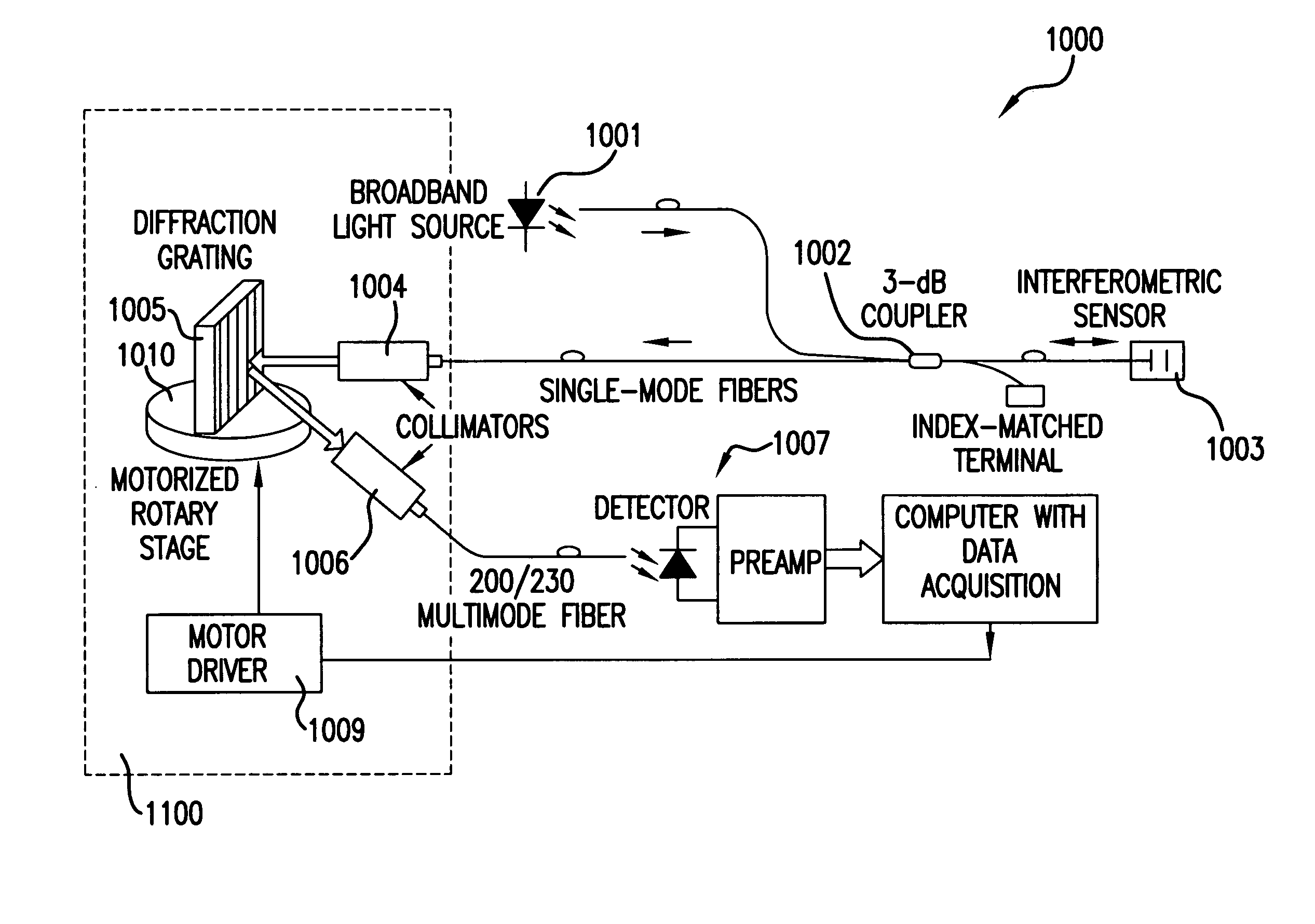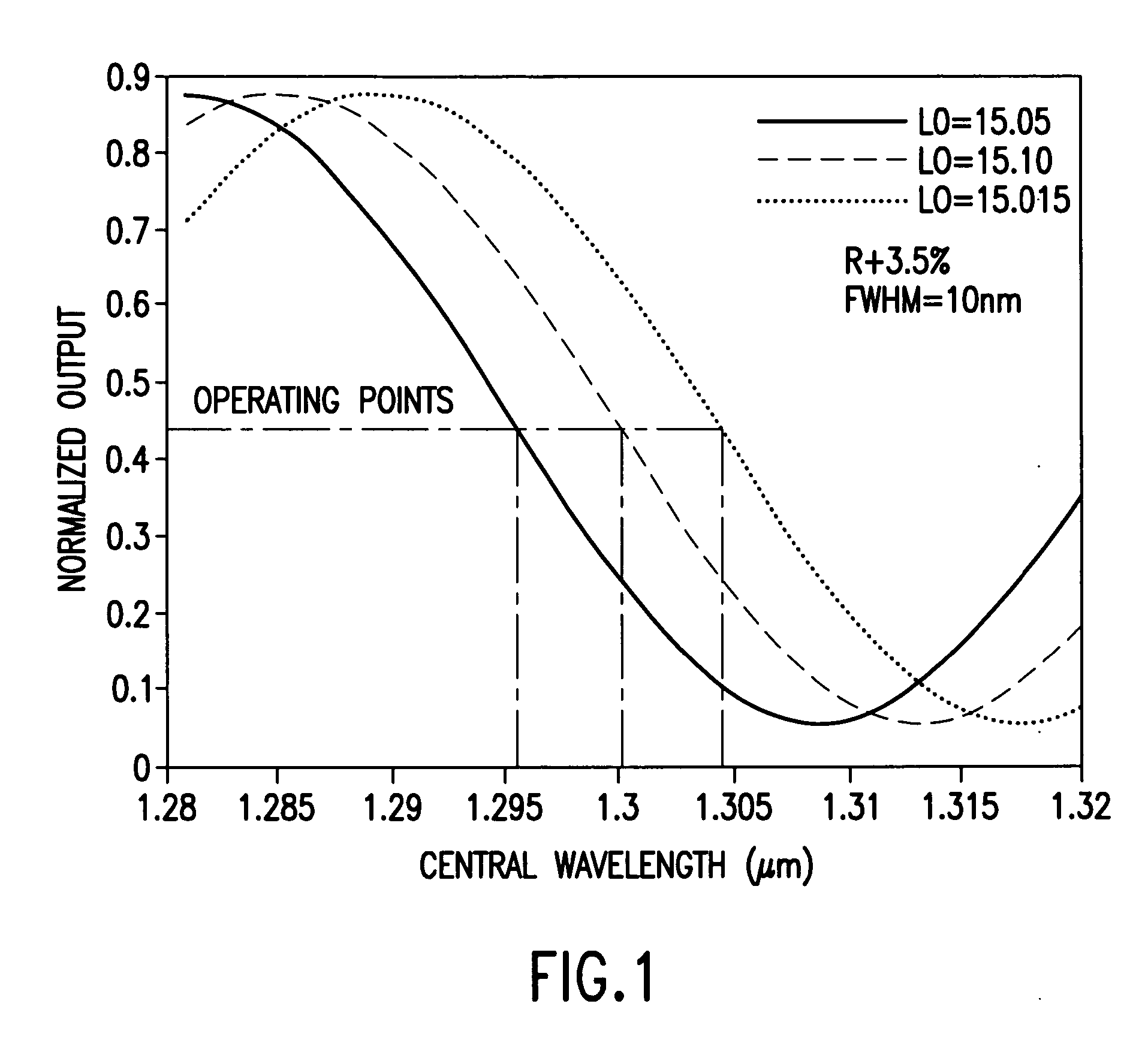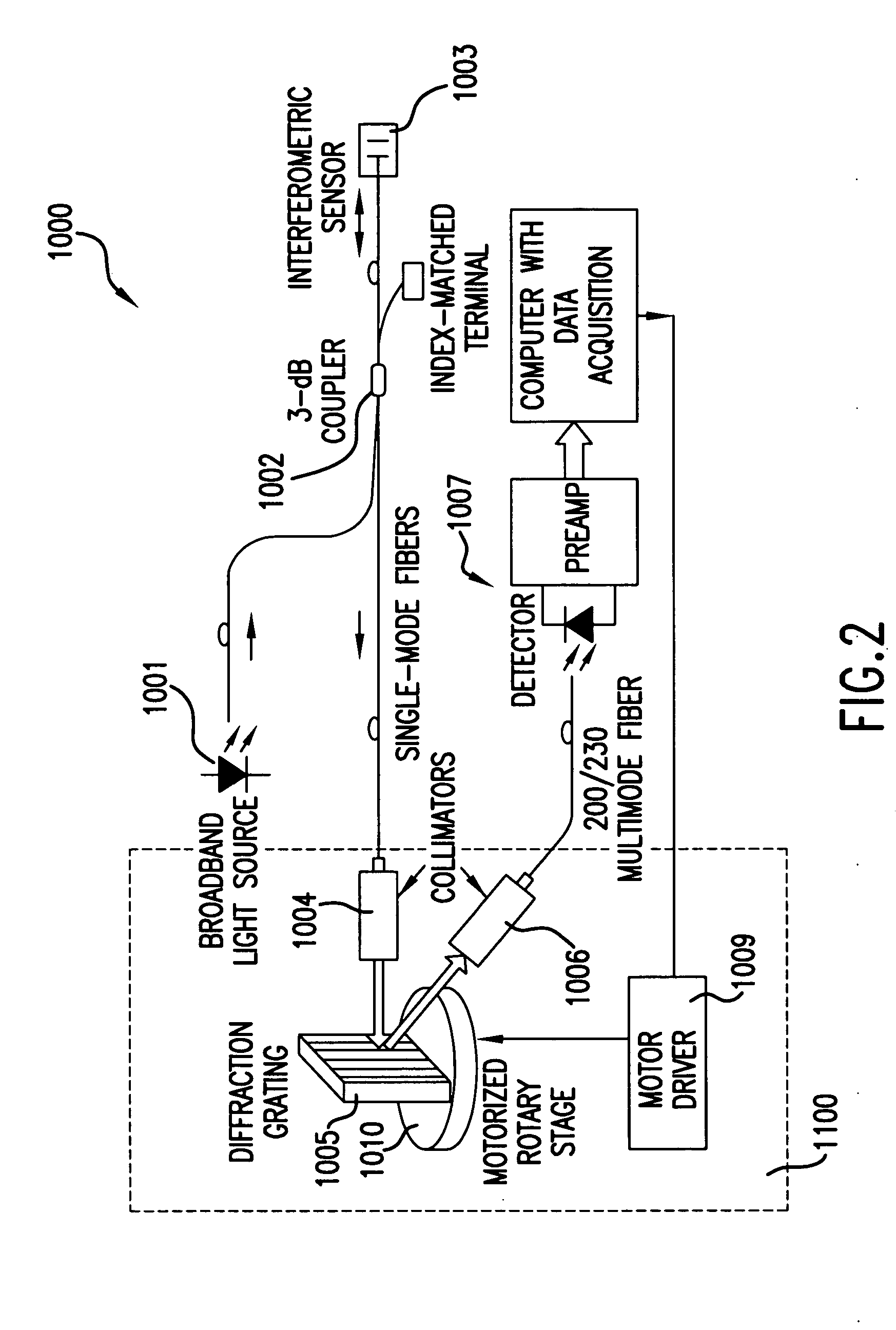Q-point stabilization for linear interferometric sensors using tunable diffraction grating
- Summary
- Abstract
- Description
- Claims
- Application Information
AI Technical Summary
Problems solved by technology
Method used
Image
Examples
Embodiment Construction
[0026] The present invention will be discussed with reference to preferred embodiments of linear interferometric sensor systems. Specific details are set forth in order to provide a thorough understanding of the present invention. The preferred embodiments discussed herein should not be understood to limit the invention. Furthermore, for ease of understanding, certain method steps are delineated as separate steps; however, these steps should not be construed as necessarily distinct nor order dependent in their performance.
[0027] Interferometric-intensity-based detection is a widely used demodulation technique in optical interferometric sensors, such as Fabry-Perot, Mach-Zehnder and Sagnac sensors. When a monochromatic light of wavelength λ is used to interrogate the sensors, the optical intensity of the interference between the sensing beam and the reference beam can be expressed as:
I=I1I2+2{square root}{square root over (I1I2 cos φ)}
where I1 and I2 represent the optical intensit...
PUM
 Login to View More
Login to View More Abstract
Description
Claims
Application Information
 Login to View More
Login to View More - R&D
- Intellectual Property
- Life Sciences
- Materials
- Tech Scout
- Unparalleled Data Quality
- Higher Quality Content
- 60% Fewer Hallucinations
Browse by: Latest US Patents, China's latest patents, Technical Efficacy Thesaurus, Application Domain, Technology Topic, Popular Technical Reports.
© 2025 PatSnap. All rights reserved.Legal|Privacy policy|Modern Slavery Act Transparency Statement|Sitemap|About US| Contact US: help@patsnap.com



